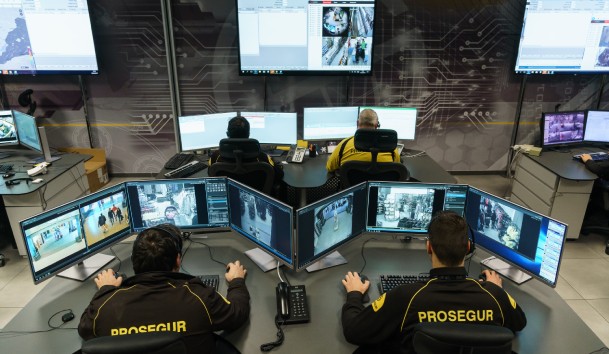Blog
How to Get Your Security Video Stream to a Remote Monitoring Center

With all the benefits of remote monitoring, we still have to consider the most important part: how to connect your video feed to a remote monitoring center, securely and reliably. There are a lot of options for video transmission, making it easy for your security team to figure out what’s the easiest based on your needs.
Partnering with Your IT Team
My number-one recommendation is to talk to your IT team first. Though they might be resistant to the idea at the beginning, you can explain your security strategy and work with them to figure out the safest way to do remote monitoring.
Find out what their procedures are. Does the video stream need to be encrypted? Does it have to use HTTPS? If it doesn’t have to be encrypted, is a MAC address filter required? Whatever those requirements are, you should then put a plan together. Fortunately, for all the solutions out there, there are many ways that the camera systems and video management systems (VMS) not only meet the needed standards but actually exceed them.
Most IT teams have processes and procedures in place for security network devices, which is what remote monitoring is based on. That’s why the first step is to engage with your IT team and learn what you need to follow when it comes to network devices that are transmitting offsite. In many cases, it may also make sense to have your cameras reside on a dedicated network that’s completely separate from the rest of your infrastructure.
How Much Bandwidth Do You Really Need?
The biggest misconception about remote monitoring has to do with the bandwidth requirements and restrictions. Security and IT teams are worried that they won’t have enough bandwidth or that the bandwidth on the camera is going to take down their whole network.
While you may have many other cameras on the system, if they are not being accessed remotely at once, they are not taking up any uplink bandwidth. The bandwidth needed to stream a video feed to your remote monitoring center does vary, but today with H.264 video compression standard, a 720p HDTV quality stream can be only a couple hundred Kbps (kilobits per second), which can travel through even the slowest internet connections. If you want to reduce the bandwidth usage even further, you can use a multi-streaming technique. Record video at a higher resolution and frame rate locally, but stream video at a lower resolution and frame rate for remote monitoring.
If you still don’t have that bandwidth you need, or your IT team doesn’t want to let you use that bandwidth, there are still solutions for that. You can go cellular. Cell options today are a lot more flexible than previous versions. With cell routers supporting multiple carriers and even redundant SIM cards, there aren’t many areas where cell signal can’t reach. Most areas have 4G or even 5G, and both of these can support four full-resolution steams simultaneously. If you plan your system carefully, and limit remote access, the cellular option doesn’t have to be expensive.
Using a Cellular Network for Mobile Solutions
If you’re only going to have the solution for two or three months, do you want to go through all the headaches of going through all the IT requirements and security features? Instead, you can have a completely isolated remote monitoring system on a cellular network that never touches your business network, which means your IT team most likely won’t raise as many concerns about potential security issues.
How can we keep the costs of cellular down? All the data plans for major cellular networks have a similar cost, so it’s not about comparing rates. Where you can save money is by selecting a smaller data plan that you might think you need. Put a small local server on your mobile or temporary surveillance unit and use that for event-driven monitoring, only streaming an event while it’s actually occurring. This is going to keep you in range of the lower data cellular plan.
Using video analytics and sensors will help keep the false alarms down. By reducing the number of times that a guard or operator has to actually get into the system, you will dramatically reduce the actual usage of your system. And if you’re not using it, then the bandwidth and data plans won’t be run up. You might be able to downsize your cellular data plan after seeing exactly how much data you really need.
Using Cellular Network for Permanent Security Solutions
If we look at permanent security solutions, cellular can be a great option as well. Maybe you have a permanently installed system where you only want temporary remote monitoring. A cellular network is isolated, so if someone does gain access to it, they’re not actually gaining access to your company network. Also, hacking into national carriers like Verizon and AT&T is extremely difficult and time consuming.
Sometimes it’s just easier to use a cellular network, even for permanent installations. Maybe one particular location only has a DSL line and you don’t want to saturate that when you need it for your business operations so you can transfer a video stream for an event. This means that the cameras can still be in a high resolution and frame rate locally — either on your local DVR in your permanent solution or your local network video recorder (NVR) in your mobile solution — while streaming on a lower quality feed. By just working these different network options, you can find a way to keep overall costs down and still securely get your video out to the remote monitoring center.